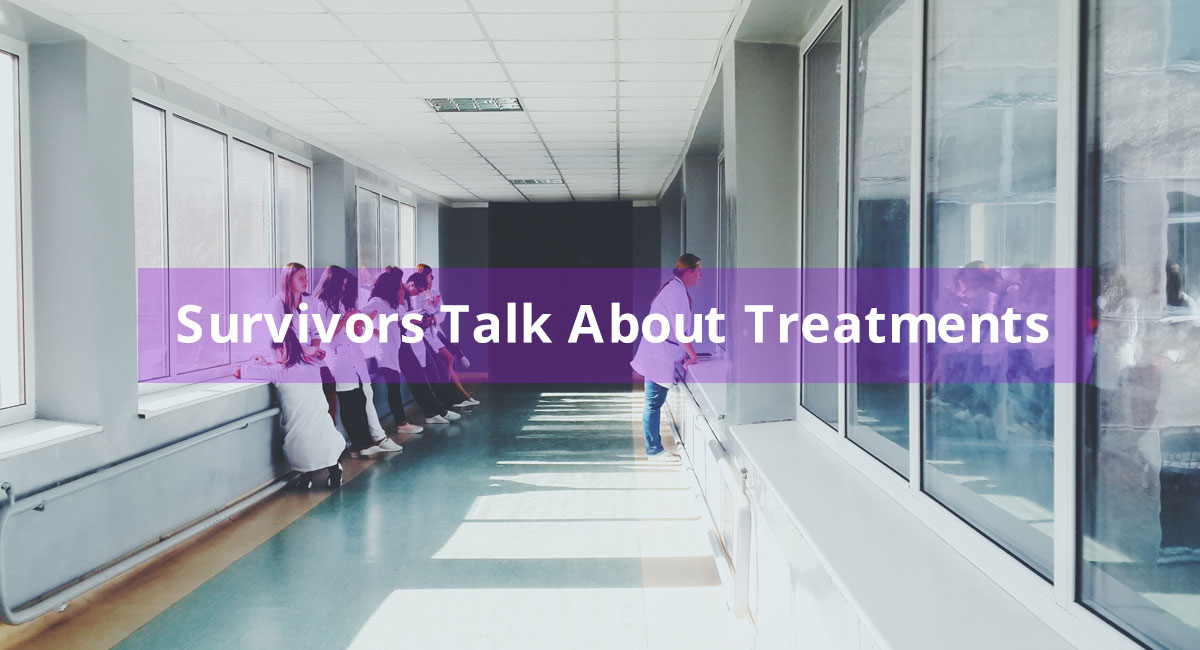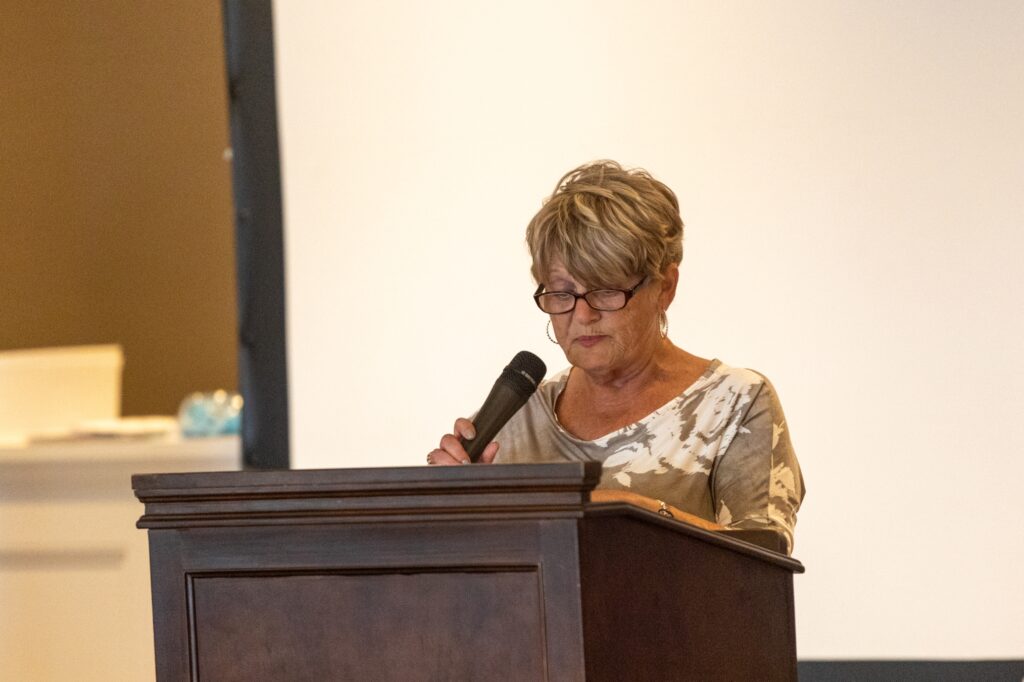 In this Part Two of a Three Part series about living with inoperable Pancreatic Cancer, we hear from survivors about the treatments that they receive. In Part One, we learned about how challenging it is to diagnose Pancreatic Cancer. Symptoms are often vague or non-existent, which delays patients’ getting an accurate diagnosis. Most patients are not diagnosed until the cancer has spread outside of the Pancreas. Once this occurs, surgery is no longer considered an option for patients. In this installment, we hear from patients about the treatments that they are receiving.
In this Part Two of a Three Part series about living with inoperable Pancreatic Cancer, we hear from survivors about the treatments that they receive. In Part One, we learned about how challenging it is to diagnose Pancreatic Cancer. Symptoms are often vague or non-existent, which delays patients’ getting an accurate diagnosis. Most patients are not diagnosed until the cancer has spread outside of the Pancreas. Once this occurs, surgery is no longer considered an option for patients. In this installment, we hear from patients about the treatments that they are receiving.
ALLYSON
(Allyson has had a recurrence following surgery): I am back on FOLFIRINOX. I have experienced numerous side effects from the chemo such as hair loss, ringing in my ears, brown spots on my skin, mouth and throat sores, extreme fatigue, weight loss and neuropathy in my hands and feet.
BECKY
My oncologist and surgeon felt that I should go through three months of Gemzar/Abraxane prior to attempting surgery. They saw a couple of cysts on the pancreas and lesions on the liver. They said the tumor was against the portal vein and they were hoping that the chemo would shrink it away from the vein. During chemotherapy, I suffered from extreme fatigue, sepsis, low white blood cell count, and low platelets. When all was said and done, I received only six chemo treatments instead of the nine treatments that had been planned. We waited a couple of weeks and then returned to Iowa City for more blood work and a scan. The report said that the tumor had shrunk considerably but was still against the vein. The surgeon did not think that surgery would be an option.
The doctors ordered five weeks of 5FU in a pump 24/7 and 5 days per week of radiation. I tolerated this pretty well other than infection in my mouth. I went back to Iowa City again for blood work and a scan. This time it looked like the tumor had not shrunk and instead was now wrapped around the portal vein. The doctors thought surgery would have been dangerous. My tumor markers remained low, however, and the doctors believed they had killed the cancer cells with the chemotherapy. I was given the option to stay on chemo to be sure the cancer cells were dead. I asked the doctor what my options were if I wanted to live a normal life, because that is not possible while on chemo. He said that I could come in monthly for a scan and blood work to watch it closely. My next scan will be in the first part of April.
PAUL
(Paul had an aborted Whipple procedure, when it was discovered that his cancer had spread to his liver): Looking back, I think it was a blessing as often times there are cells left behind after the Whipple. I might have had complications and I certainly would have been in a weakened state. By the time I started treatment in September, there was another nodule in my liver. I was put on FOLFIRINOX. I received 13 treatments, but decided to stop because I developed neuropathy. I then switched to FOLFIRI. After 8 months, I got the news that I showed no evidence of disease. I then went on 5FU once every three weeks, because my body needed a rest.
After a year, a recurrence was spotted right near my primary tumor. I went back to FOLFIRI every two weeks. Yes, it was a setback, but I have been very optimistic over my journey.
BRUCE
I receive the chemotherapy combination of Gemzar and Abraxane. I also work with an alternative specialist. A CT scan at the end of January showed enough of a tumor reduction to allow me to add stereotactic radiation therapy. Next week I will also add another drug, which is not currently available in the US (Bruce lives in Germany). I am throwing everything possible at this monster, including the kitchen sink.
I receive the chemotherapy combination of Gemzar and Abraxane. I also work with an alternative specialist. A CT scan at the end of January showed enough of a tumor reduction to allow me to add stereotactic radiation therapy. Next week I will also add another drug, which is not currently available in the US (Bruce lives in Germany). I am throwing everything possible at this monster, including the kitchen sink.
TINA
I was diagnosed at Stage III, with the tumor wrapped around the portal vein. My doctor wanted to try to shrink the tumor enough to remove it. I had no insurance, so I was in a waiting game as I applied for disability and Medicaid. Two weeks passed when my oncologist called and said, “We can’t wait any longer.” The doctor decided that they would proceed with my chemotherapy and just hope I got approved for Medicaid. I had six rounds of 5FU over twelve weeks, followed by radiation therapy. I lost a lot of weight while on the chemo because I did not feel like eating and I had severe diarrhea. I also experienced a lot of hair thinning. The radiation made me extremely sick. I could not get out of bed on my own. My husband had to take me to the bathroom, help me shower and even dress me. I could not keep any food or drink down. I had to go to the emergency room four times for fluids and pain medicines. I was now down to 130 pounds. I was told I could never do radiation again because it would kill me. After all of those treatments, a repeat scan showed that the tumor was still wrapped around the portal vein and had not shrunk at all. On February 11, 2015, I found out that I now have two nodes in my lungs.
GEORGE
I started out with a combination of Gemzar and Abraxane which gave me bowel issues. Also my platelets and white blood cells dropped dangerously low. I became even more tired and weak, experienced some nausea, hair loss and significant peripheral neuropathy. We then went to Gemzar only, and I am still currently on this chemotherapy. The side effects remained the same with the exception of the hair loss. All side effects were able to be controlled with medication except for the neuropathy and bowel issues, which I still have.
I developed pain in my back which spread around to the front and into my lower abdomen. We started out with oxycodone to control the pain. That worked for a while but I had to take increasing amounts so we went to a timed release morphine tablet taken several times per day.I still use the Oxycodone for breakthrough pain. The pain medications all create constipation. I’ve been taking lactulose three times a day along with and injection of Relistor injection as needed. This seems to work fairly well for the constipation.
SYBIL
I initially tried FOLFIRINOX. I had four rounds of that chemotherapy combination but became septic. I spent two weeks in the hospital, with four of those days in the ICU. I literally had to learn how to walk again. After recuperating from sepsis, my oncologist put me on Gemzar and Abraxane. I will have my first follow-up CT scan on March 2, 2015.
These survivors’ experiences demonstrate how desperately we need new and innovative therapies for Pancreatic Cancer. The therapies that are currently available often have side effects that are not tolerated well by the patients. Furthermore, the chemotherapies are not specific to the individual tumors, so the treatments are not always effective. Alternatively, a tumor may initially respond to a therapy, but will often stop working over time as the tumor mutates in response to the treatment. We desperately need more clinical trials that will develop new, innovative and effective treatments for people who are facing Pancreatic Cancer. Join us next week, as these courageous fighters talk about how their diagnoses has impacted their lives and their emotional health.



